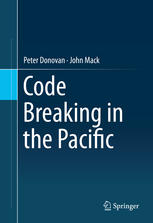

Most ebook files are in PDF format, so you can easily read them using various software such as Foxit Reader or directly on the Google Chrome browser.
Some ebook files are released by publishers in other formats such as .awz, .mobi, .epub, .fb2, etc. You may need to install specific software to read these formats on mobile/PC, such as Calibre.
Please read the tutorial at this link: https://ebookbell.com/faq
We offer FREE conversion to the popular formats you request; however, this may take some time. Therefore, right after payment, please email us, and we will try to provide the service as quickly as possible.
For some exceptional file formats or broken links (if any), please refrain from opening any disputes. Instead, email us first, and we will try to assist within a maximum of 6 hours.
EbookBell Team

0.0
0 reviewsThis book reveals the historical context and the evolution of the technically complex Allied Signals Intelligence (Sigint) activity against Japan from 1920 to 1945. It traces the all-important genesis and development of the cryptanalytic techniques used to break the main Japanese Navy code (JN-25) and the Japanese Army’s Water Transport Code during WWII. This is the first book to describe, explain and analyze the code breaking techniques developed and used to provide this intelligence, thus closing the sole remaining gap in the published accounts of the Pacific War. The authors also explore the organization of cryptographic teams and issues of security, censorship, and leaks. Correcting gaps in previous research, this book illustrates how Sigint remained crucial to Allied planning throughout the war. It helped direct the advance to the Philippines from New Guinea, the sea battles and the submarine onslaught on merchant shipping. Written by well-known authorities on the history of cryptography and mathematics, Code Breaking in the Pacific is designed for cryptologists, mathematicians and researchers working in communications security. Advanced-level students interested in cryptology, the history of the Pacific War, mathematics or the history of computing will also find this book a valuable resource.